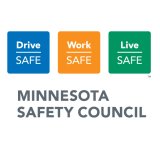What is the difference between a hearing loss and a hearing shift?
Terminology for describing results of audiometric (hearing) tests can be confusing. Conventions/common uses can vary across settings and countries. In general, "hearing loss" is a term often used interchangeably with "hearing impairment" or "hearing difficulty," referring to hearing test results outside a pre-described normal range. That is, the tone(s) has to be louder than expected for the person to detect that tone and respond. The louder the tones need to be to elicit a response, then the more hearing loss the person is said to have. Hearing loss can be mild to severe, occur in one or both ears, affect only certain tones (frequencies), and can be due to many reasons. It is important to keep in mind that the term "hearing loss" describes results of a given audiogram and does not reflect how much the person's hearing ability may have changed over time.
A "shift" in hearing, on the other hand, is a term used to describe situations when a person's hearing ability has changed (usually for the worse). A shift cannot be determined by looking at one hearing test. Instead, a shift is calculated by comparing one hearing test to a previous or baseline audiogram. Regulatory agencies such as OSHA typically have a very strict definition for classifying when a change of hearing is significant enough to be called a shift (Standard Threshold Shift) and in need of hearing conservation program action. A different regulation, and different criteria, apply when determining if a shift in hearing is signficant enough to report on the OSHA Log.
It is important to remember that hearing loss and hearing shift describe two separate, and often independent, aspects of hearing function. It is possible for someone to have a severe hearing loss or impairment, but have no change or shift in hearing over a given timeframe. Likewise, it is possible for someone with very good hearing to show a significant shift while their overall hearing ability remains within the normal range (i.e. no "hearing loss"). Of course, the ultimate goal of an effective hearing conservation program is to prevent shifts, and in turn prevent hearing loss from developing or getting worse.
- How often do workers need to be exposed to noise throughout the year before we are required to include them in our company's hearing conservation program?
- Does working in noise increase the risk of accidents?
- What is the combined noise level when two machines/noise sources that each measure 90 dBA individually are running simultaneously?
- What is NRR or Noise Reduction Rating?
- Why should we conduct hearing protection fit testing?





